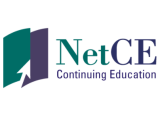CPAN: 2023-24 Anxiety Disorders in Children & Adolescents

The activity purpose is to improve the knowledge and clinical skills of community primary care providers that treat children and adolescents with mental health.
Category
- Anxiety
Format
- Self-study / Enduring
Credits
- 1.00 AMA PRA Category 1 Credit™
- 1.00 ANCC
- 1.00 AOA Category 2-B
- 1.00 Association of Social Work Boards (ASWB)
Pediatric Abusive Head Trauma

It is estimated that 95% of severe intracranial injuries and 64% of all head injuries in children 1 year of age or younger are caused by violence inflicted by parents or caretakers.
Category
Format
- Self-study / Enduring
Credits
- 1.50 AMA PRA Category 1 Credit™
- 1.50 ANCC
- 1.50 Association of Social Work Boards (ASWB)
Implicit Bias: The Michigan Requirement

The role of implicit biases on healthcare outcomes has become a concern as some cite that implicit biases contribute to health disparities, professionals' attitudes toward and interactions with patients, quality of care, diagnoses, and treatment decisions.
Category
- Implicit Bias
Format
- Self-study / Enduring
Credits
- 2.00 AMA PRA Category 1 Credit™
- 2.00 ANCC
- 2.00 Association of Social Work Boards (ASWB)
Intercultural Competence and Patient-Centered Care

Culture serves as a lens through which patients and practitioners filter their experiences and perceptions.
Category
Format
- Self-study / Enduring
Credits
- 4.00 AMA PRA Category 1 Credit™
- 4.00 ANCC
- 4.00 Association of Social Work Boards (ASWB)
Benzodiazepines: Uses, Misuses, and Alternative Treatment Models

There are a variety of primary and secondary uses for benzodiazepines. However, regardless of how clinicians or patients use them, benzodiazepines should be a short-term intervention. They are usually not recommended for use as long-term or permanent treatment solutions.
Category
- Benzodiazepine(s)
Format
- Self-study / Enduring
Credits
- 1.50 AMA PRA Category 1 Credit™
- 1.50 ANCC
- 1.50 Association of Social Work Boards (ASWB)
Implicit Bias in Healthcare

Recent movement toward diversity, equity, and inclusion (DEI) is encouraging for historically overlooked individuals. Diversity and inclusivity bring a variety of frequently ignored perspectives and experiences, but it has also uncovered the depth of implicit biases.
Category
- Implicit Bias
Format
- Self-study / Enduring
Credits
- 1.50 AMA PRA Category 1 Credit™
- 1.50 ANCC
- 1.25 Association of Social Work Boards (ASWB)
Implicit Bias in Health Care

The role of implicit biases on healthcare outcomes has become a concern as some cite that implicit biases contribute to health disparities, professionals' attitudes toward and interactions with patients, quality of care, diagnoses, and treatment decisions.
Category
- Implicit Bias
Format
- Self-study / Enduring
Credits
- 3.00 AMA PRA Category 1 Credit™
- 3.00 ANCC
- 3.00 Association of Social Work Boards (ASWB)
Suicide Assessment and Prevention

Suicide is a major preventable public health problem and cause of mortality. This course will review the major aspects of suicide assessment, management, and prevention, with a special focus on military veterans.
Category
- State Mandated Training
- Suicide
Format
- Self-study / Enduring
Credits
- 6.00 AMA PRA Category 1 Credit™
- 6.00 ANCC
- 6.00 Association of Social Work Boards (ASWB)
Suicide Prevention: At-Risk Populations Assessment, Treatment, and Risk Management (WA)

This multi-lesson module provides suicide training according to the state of Washington requirements. The four lessons cover:Lesson 1: Assessing and Screening for Suicide Risk: provides skills to identify individuals at increased risk of suicide
Category
- State Mandated Training
- Suicide
Format
- Self-study / Enduring
Credits
- 6.00 AMA PRA Category 1 Credit™
- 6.00 ANCC
- 6.00 Association of Social Work Boards (ASWB)
Sexual Harassment Prevention: The Illinois Requirement

Sexual harassment in the workplace can be prevented and/or discouraged with training, anti-harassment policies, and reporting. Employers are responsible for creating work environments that are safe for all employees and are free from harassment.
Category
- State Mandated Training
Format
- Self-study / Enduring
Credits
- 1.00 AMA PRA Category 1 Credit™
- 1.00 ANCC
- 1.00 Association of Social Work Boards (ASWB)

 Facebook
Facebook Twitter
Twitter LinkedIn
LinkedIn Forward
Forward